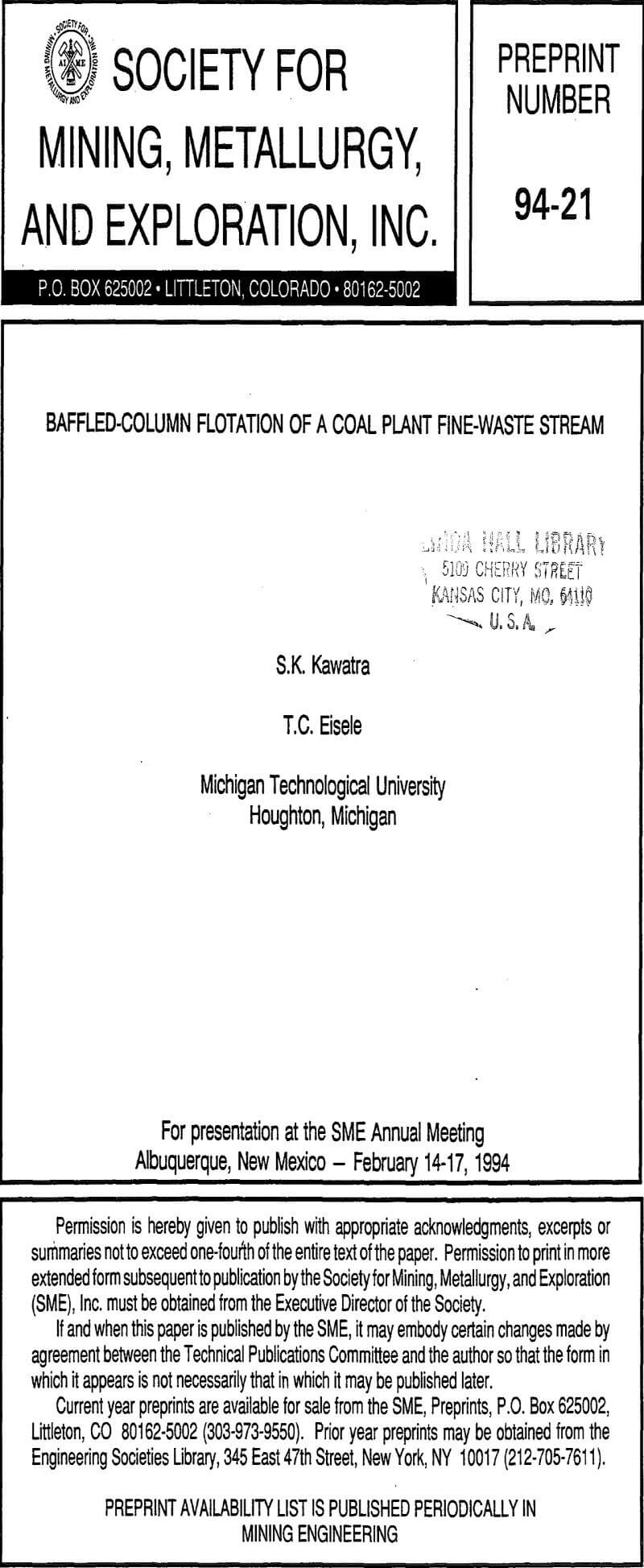Table of Contents
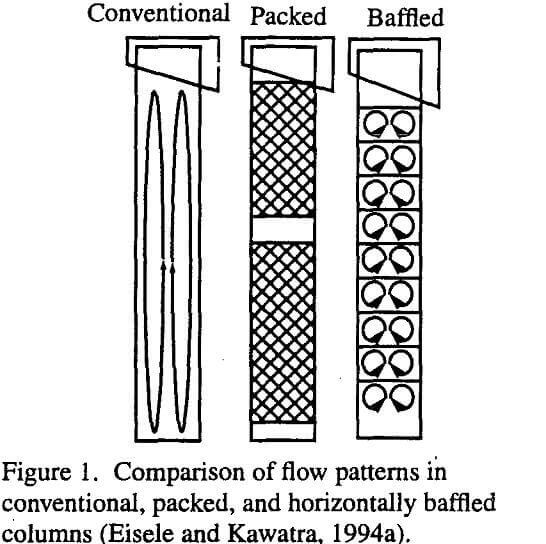 The increased use of flotation columns is due to their superior separation efficiency compared to conventional flotation. This increased efficiency can be attributed to:
The increased use of flotation columns is due to their superior separation efficiency compared to conventional flotation. This increased efficiency can be attributed to:
- The countercurrent movement of slurry and air bubbles increases the probability of bubble / particle attachment. This is accomplished by larger aerated volume of the cell, longer concentration gradient between froth and sinks, and the increased time of contact between air bubbles and particles.
- Froth washing, which provides a secondary upgrading to reduce entrainment of the gangue in the froth.
In addition to these there are several other advantages of column flotation: lower power requirements, lower capital cost, and it requires less floor space than conventional flotation. The improved performance of column flotation over conventional flotation is not without draw backs.
It is well known that axial mixing and coalescence of air bubbles results in a decrease in efficiency of separation in flotation columns.
Axial mixing is the vertical mixing which occurs along the axis of the column (see Figure 1). The results of this axial mixing are two-fold:
- Upward movement of slurry in the center of the column carries gangue minerals up to the froth, which tends to increase entrainment of ash; and
- Downward flow of slurry along the outside wall of the column carries small bubbles and coal particles downward, resulting in a loss of valuable material.
Axial mixing will increase if the column is not vertical or non-uniform aeration develops. Several investigators have developed methods of reducing this axial mixing.
Coalescence of air bubbles can also degrade performance of a column. As bubbles rise, they can merge with other bubbles, which results in larger, faster-rising bubbles. The hydrostatic pressure in the column also decreases as the bubbles rise, which also causes them to enlarge. These large bubbles are less able to contact the finer coal particles, and have less surface area available for particles to attach, and so coarser bubbles lead to lower capacity. If the bubbles become too large, they can also disrupt the froth layer, which interferes with froth washing and leads to a higher-ash froth product.
The horizontal baffled column was designed for improved performance in coal flotation. It has been extensively tested in an industrial setting without showing the negative effects (plugging and reduced capacity) observed in other columns which attempted to reduce axial mixing. The baffles have been designed to be straightforward modifications to existing columns, so they can be installed as a retrofit at reasonable cost. It is also possible to design the baffles to allow trash and foreign objects to pass through, while preventing bubbles from coalescing and becoming large enough to be troublesome.
The Column Flotation Baffles were divided into two zones, one above the feed inlet, and the other below the feed inlet. The benefit of the upper baffles in the column was to reduced the coalescence of air bubbles as they rise through the column. This in turn would reduce the axial mixing which would increase the separation efficiency of the column. The benefit of the lower baffles was to increase the retention time of the sinks, to insure that every floatable particle has an opportunity to be recovered.
An increase of approximately 50% in weight recovery and a decrease of nearly 40% in ash content was observed when a horizontal baffled column was used on a high ash coal compared to non-baffled plant scale column.
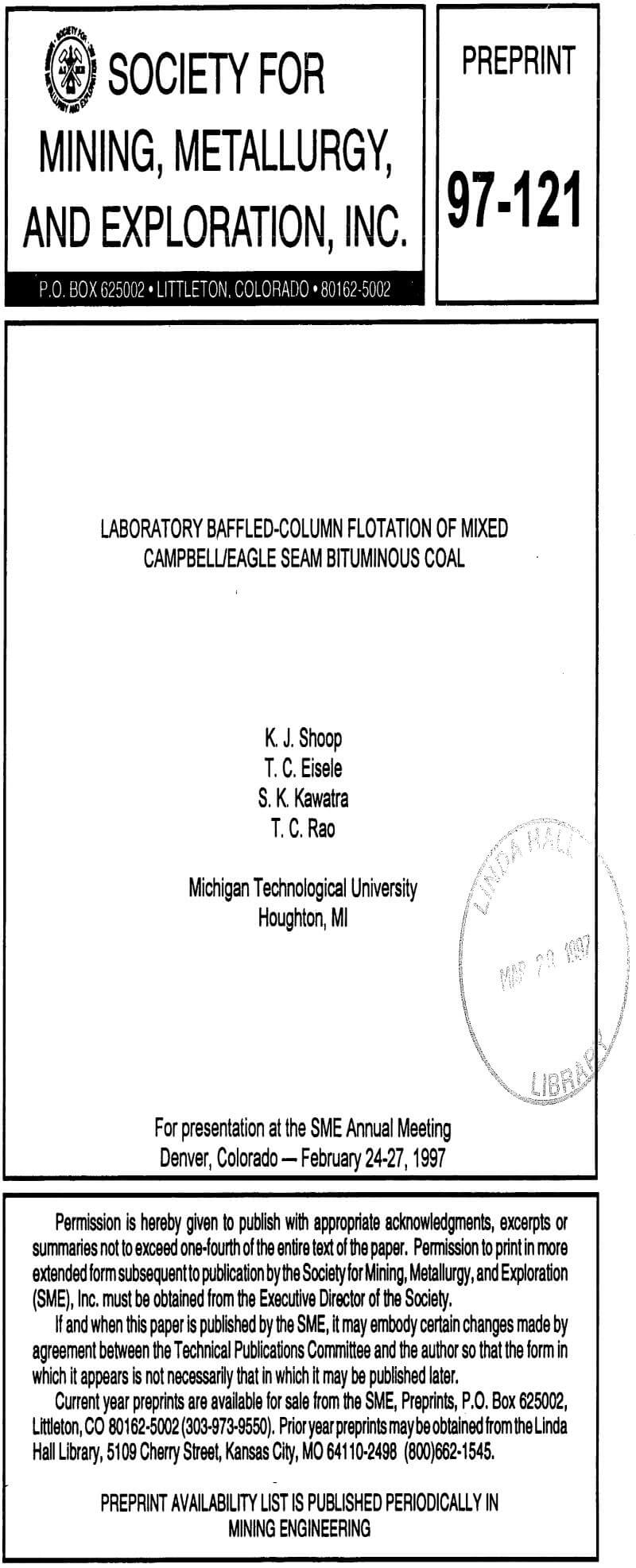
Baffled Column Flotation of a Coal Plant Fine-Waste Stream
It is common in coal-cleaning operations to produce a fine waste stream which contains a considerable amount of coal, but which is not economical to recover both because it is mixed with large amounts of difficult-to-remove clay slimes, and because the fines are often heavily oxidized. Conventional froth flotation machines cannot produce an acceptable product from such material in a single stage of flotation, and even flotation columns often have difficulty cleaning this type of feed.
Theoretical Discussion
Horizontal baffles, such as those described in this paper, are a compromise between the regular column and the packed column. The horizontal baffles consist of simple perforated plates, with openings large enough to keep them from being plugged by solid particles, but small enough to break up vertical mixing currents, as shown in Figure 1, so that slurry cannot be rapidly swept along the axis of the column.
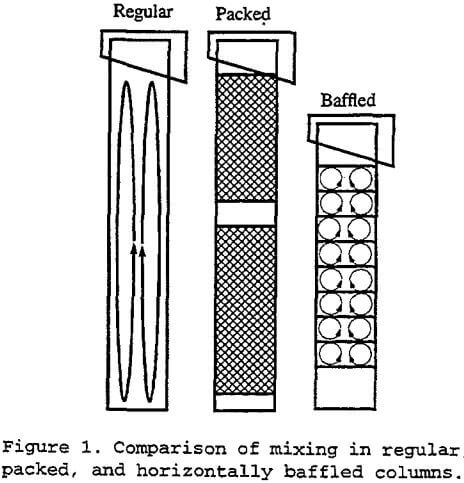
Procedures
The feed used for the tests described in this paper was filtered solids from the plant tailings thickener. This material contained 39.8% ash, 2.83% total sulfur, 2.04% pyritic sulfur, and 8401 BTU/lb.
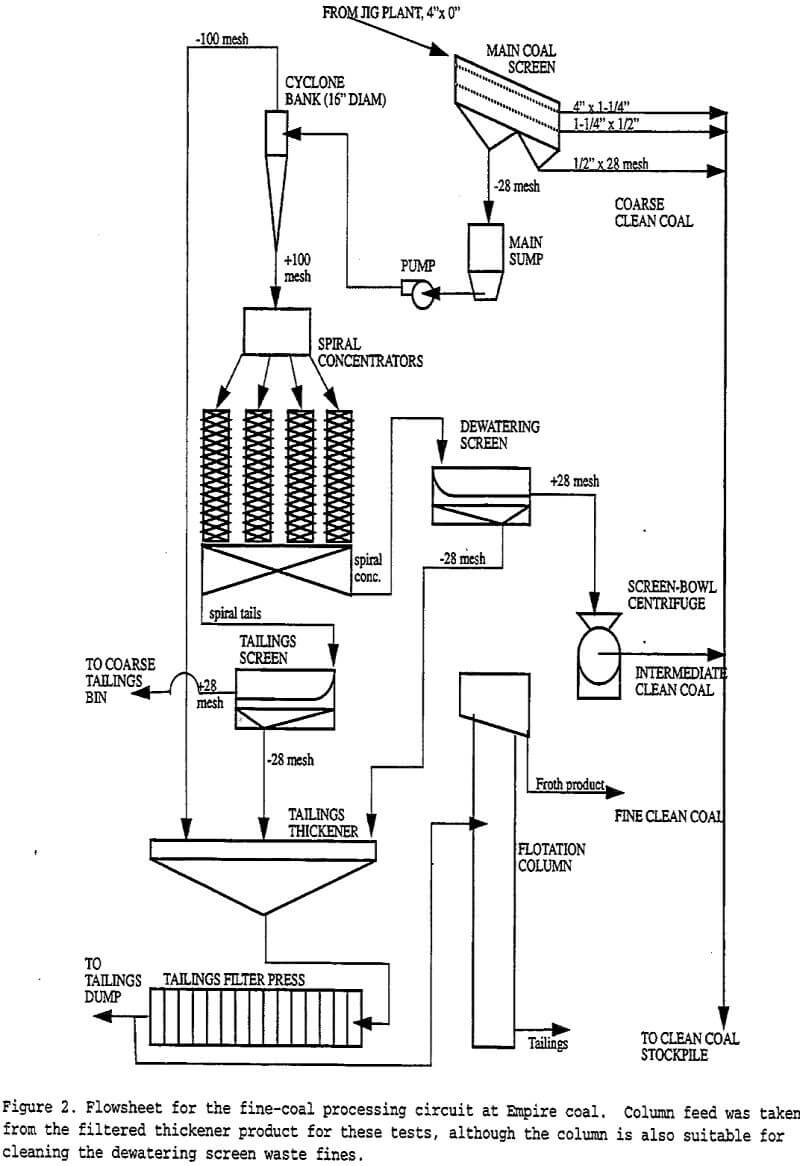
The column was derived from a Deister Flotaire unit, 20.3 cm in diameter and 9.1 meters tall. The column was operated with a froth depth of 61 cm. Measuring from the froth overflow lip, the end of the feed inlet tube was at a depth of 122 cm. This long feed tube was needed so that there would be enough room between the froth base and the feed inlet to install baffles. The upper baffles extended from a depth of 71 cm to 117 cm, and the lower baffles extended from 147 cm to 234 cm.
In initial troubleshooting tests, it was found that once the baffles were installed in the column, the froth would collapse unless frother was added to the washwater. This was a result of the upper baffles increasing the effectiveness of the washwater, so that frother rising from the feed slurry or the bubble generator water would be flushed back down before it could reach the froth.
For each test, 190 liters of a 10% solids slurry was prepared, and conditioned for 5 minutes with the desired reagents. The column was filled and brought to stable operation, and the feed slurry was pumped in over a 25 minute time interval at a flowrate of 7.6 liters/min. Froth and tailings samples were collected after 20 minutes of operation, to give the column sufficient time to reach steady-state.
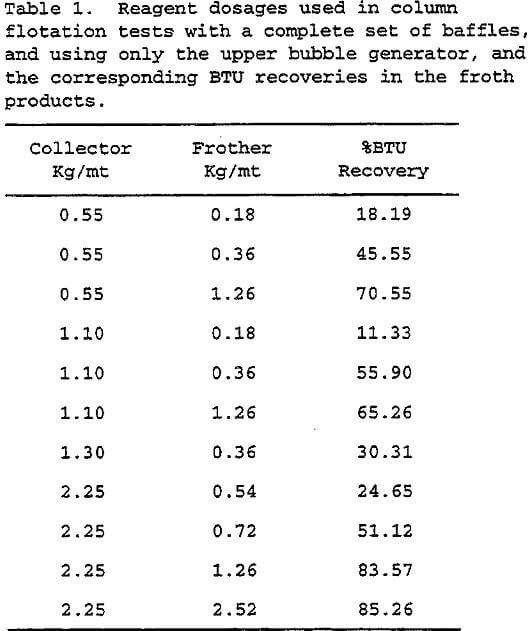
When the baffles are installed in the column, the BTU recovery is increased markedly, from less than 20% to approximately 50%, even though the reagent dosage is unchanged, and was well below the optimum level in any case. Also, the tests with the baffles installed had a lower air flowrate than the unbaffled tests, since they used only a single bubble generator, which would normally have reduced the recovery. Since the baffled column showed a higher recovery in spite of this disadvantage, it is definitely superior to the unbaffled column for this type of feed.
